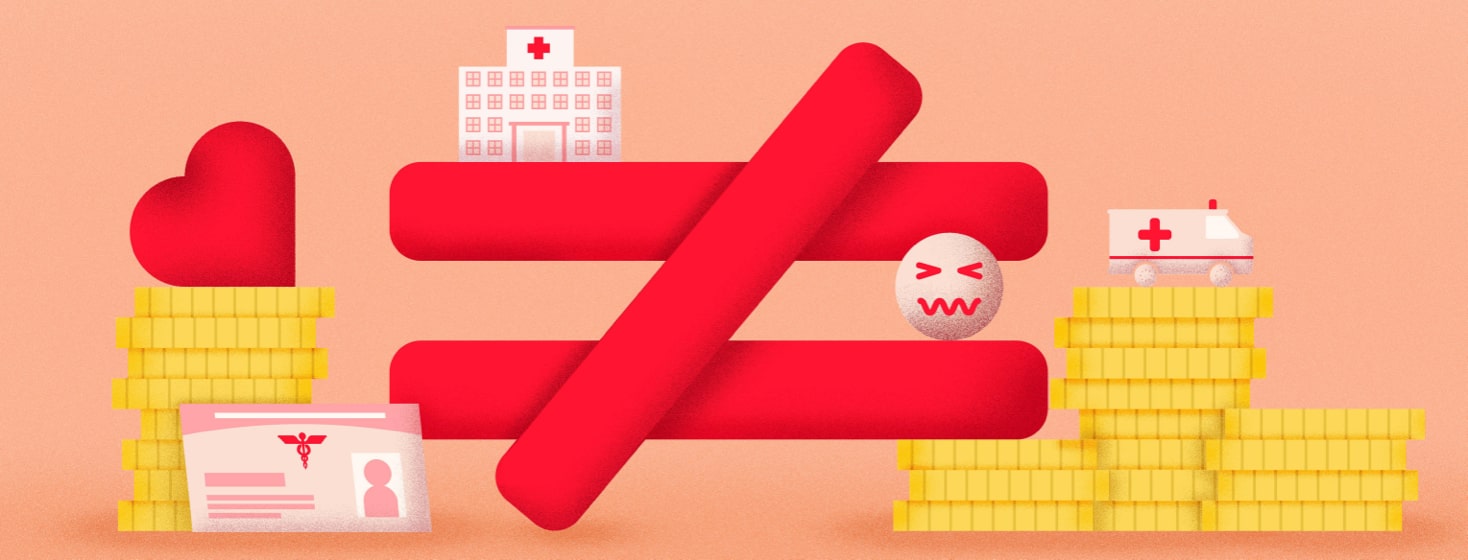Racial Disparities in Healthcare
The term "racial disparities" refers to the ways that different racial groups are treated differently or have different outcomes. Racial disparities in healthcare are differences in care that harm certain racial groups.1
These disparities include differences in:1
- Health insurance coverage
- Access to healthcare
- Quality of healthcare
- Costs of healthcare
While some measures of health and access to healthcare have improved over time, there are still racial disparities. A 2021 study found lasting differences between racial groups in 3 key areas:2
- Health status
- Healthcare access
- Ability to pay for healthcare
The differences are biggest for Black and Hispanic/Latino adults. These groups have more trouble accessing and affording healthcare than white adults, leading to worse health outcomes.2
Causes of racial disparities in healthcare
The causes of racial disparities in healthcare are complex. They include factors both inside and outside the healthcare system.1,3,4
Within the healthcare system, disparities can be caused by:1,4
- Differences in health insurance status
- Unequal access to healthcare providers
- Racial bias among medical workers (whether or not the workers are aware of it)
- Lack of diversity in the healthcare workforce
- Lack of providers who speak a particular language or who understand a particular culture
Outside of the healthcare system, disparities can be caused by social determinants of health (SDH). These are factors in all people's lives that play a role in their health. Examples of SDH include:3
- Employment and access to jobs
- Education level
- Access to survival basics like food and safe housing
- Racial bias in society
Experts have found that SDH is one of the most critical aspects of good health. These factors lead to 30 to 55 percent of health outcomes.3
Effects of racial disparities in healthcare
Racial disparities in healthcare have a big impact on those who experience them. These differences can result in:5,6
- Less access to quality care – This can lead to delays in diagnosis, untreated health conditions, and poorer health outcomes.
- Unequal burden of disease – Compared to white people in the United States, people of color are more likely to become ill and die from certain diseases. These include diabetes, high blood pressure, obesity, asthma, and heart disease.
- Lower life expectancy – Black Americans live, on average, 4 years less than white Americans.
- Higher healthcare debt – About 4 out of 10 Americans have some medical debt. But the burden of this debt is higher among Black and Hispanic people. They report having more trouble paying medical bills. They also are more likely to go without needed prescription medicine because of the cost.
Addressing racial disparities in healthcare
By 2050, experts expect that people of color will make up more than half of the US population. A more racially diverse country calls for increased focus on the health needs of these populations.1
After Congress passed the Affordable Care Act (ACA) in 2014, people of color saw needed gains in healthcare coverage. But today, many still remain uninsured. Even people who are eligible for public health programs like Medicaid and CHIP often deal with obstacles to enrolling.1
The US government is trying to reduce racial disparities in healthcare. They are taking actions like addressing the high rate of maternal mortality among Black and indigenous women. And they are focusing on removing barriers to healthcare faced by people with limited knowledge of English. State governments, local groups, and healthcare provider also are working toward more equity in healthcare.1

Join the conversation